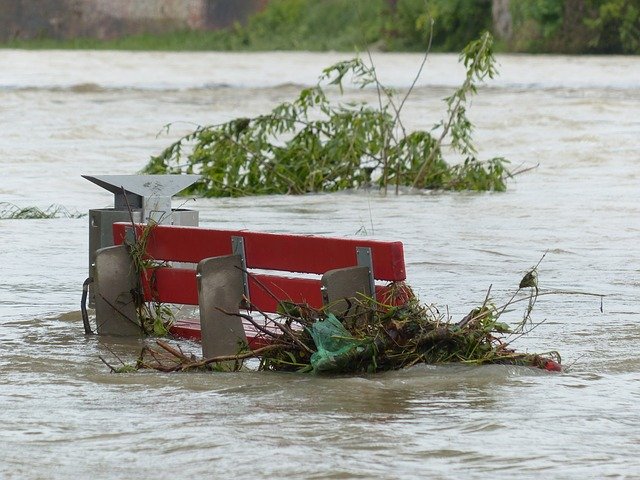Flood risk management
Contents |
[edit] Introduction
The National planning policy framework (NPPF) considers flood risk to be the combination of the probability and the potential consequences of flooding from all sources, including:
- Rivers and the sea.
- Rainfall.
- Rising groundwater.
- Overwhelmed sewers and drainage systems.
- Reservoirs, canals and lakes.
- Other artificial sources.
For more information, see National planning policy framework NPPF.
Flood risk management can be loosely defined as the analysis, understanding and appropriate actions based on a flood risk assessment that examines the connection between the sources mentioned in the NPPF as well as physical systems and other environmental conditions.
Actions that address the risks posed by flooding may include:
- Flood defence systems.
- Warning and informing systems.
- Relocation of people in high risk areas.
- Spatial planning.
- Floodplain mapping.
Through these activities, flood risk management can help reduce the risk from flooding for those people located in flood zones.
[edit] The Flood and Water Management Act 2010
The Flood and Water Management Act was introduced on 8 April 2010 to implement Sir Michael Pitt’s recommendations following the widespread flooding of 2007 when more than 55,000 homes and businesses were flooded (see Pitt Review).
The Act required better management of flood risk, created safeguards against rises in surface water drainage charges and protected water supplies for consumers. It also gave a new responsibility to the Environment Agency for developing a National Flood and Coastal Risk Management Strategy.
For more information, see Flood and Water Management Act.
[edit] Flood and coastal erosion risk management FCERM
In 2020, the Environment Agency acknowledged the connection between floods and coastal erosion. Its National Flood and Coastal Erosion Risk Management (FCERM) strategy for England defined FCERM as managing the risks of flooding and coastal erosion to people, property and the natural environment through minimising, predicting and managing the risk.
The strategy sought to identify better methods of understanding and managing the risks and consequences of flooding from:
- Rivers.
- The sea.
- Groundwater.
- Reservoirs.
- Ordinary watercourses.
- Surface water.
- Sewers.
- Coastal erosion.
It also instructed Risk Management Authorities (RMAs) involved in FCERM to exercise their plans and activities consistently with the strategy.
For more information, see Risk management authority RMA.
[edit] Related articles on Designing Buildings
- Adaptive pathways.
- Coast protection authorities.
- Coastal groups.
- Drainage and sewerage management plans DSMPs.
- Flood and Water Management Act.
- Flood risk management plans.
- Flood Risk Management (Scotland) Act 2009.
- Habitat Compensation Programme HCP.
- Long-term investment scenarios LTIS.
- National planning policy framework NPPF.
- Outline planning application.
- Risk management authority RMA.
- Shoreline management plans SMPs.
[edit] External resources
Featured articles and news
UK Infrastructure: A 10 Year Strategy. In brief with reactions
With the National Infrastructure and Service Transformation Authority (NISTA).
Ebenezer Howard: inventor of the garden city. Book review.
The Grenfell Tower fire, eight years on
A time to pause and reflect as Dubai tower block fire reported just before anniversary.
Airtightness Topic Guide BSRIA TG 27/2025
Explaining the basics of airtightness, what it is, why it's important, when it's required and how it's carried out.
Construction contract awards hit lowest point of 2025
Plummeting for second consecutive month, intensifying concerns for housing and infrastructure goals.
Understanding Mental Health in the Built Environment 2025
Examining the state of mental health in construction, shedding light on levels of stress, anxiety and depression.
The benefits of engaging with insulation manufacturers
When considering ground floor constructions.
Lighting Industry endorses Blueprint for Electrification
The Lighting Industry Association fully supports the ECA Blueprint as a timely, urgent call to action.
BSRIA Sentinel Clerk of Works Training Case Study
Strengthening expertise to enhance service delivery with integrated cutting-edge industry knowledge.
Impact report from the Supply Chain Sustainability School
Free sustainability skills, training and support delivered to thousands of UK companies to help cut carbon.
The Building Safety Forum at the Installershow 2025
With speakers confirmed for 24 June as part of Building Safety Week.
The UK’s largest air pollution campaign.
Future Homes Standard, now includes solar, but what else?
Will the new standard, due to in the Autumn, go far enough in terms of performance ?
BSRIA Briefing: Cleaner Air, Better tomorrow
A look back at issues relating to inside and outside air quality, discussed during the BSRIA briefing in 2023.
Restoring Abbotsford's hothouse
Bringing the writer Walter Scott's garden to life.
Reflections on the spending review with CIAT.
Retired firefighter cycles world to raise Grenfell funds
Leaving on 14 June 2025 Stephen will raise money for youth and schools through the Grenfell Foundation.
Key points for construction at a glance with industry reactions.
























